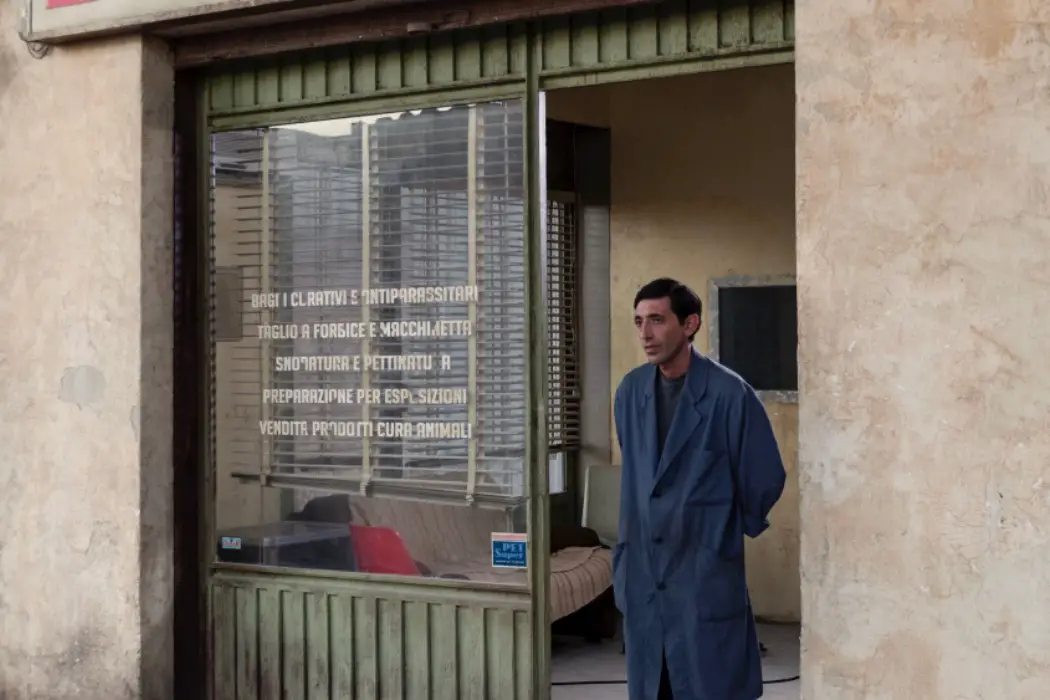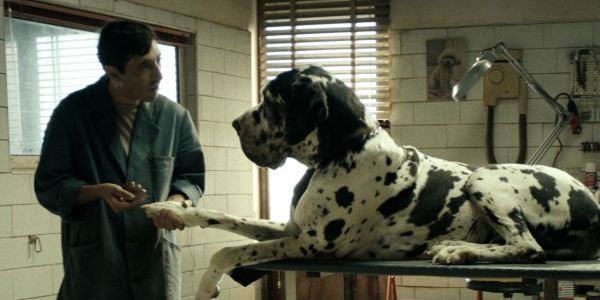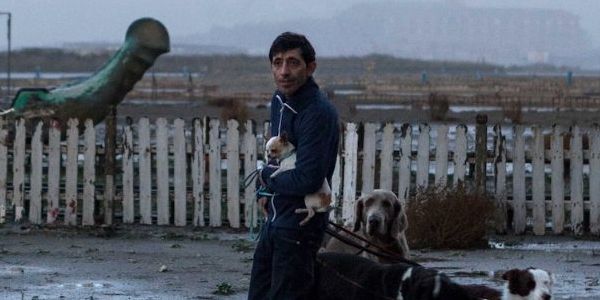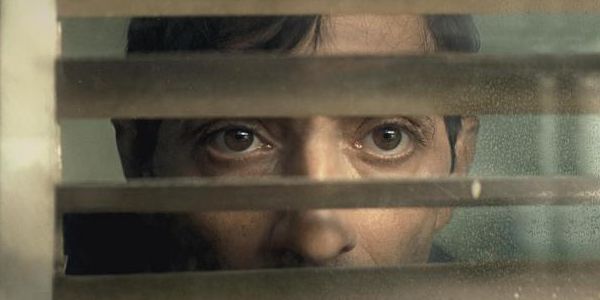The Tweaked Neorealism Of DOGMAN

Andrew Emerson is a University of Chicago student. His high…
Matteo Garrone’s Dogman tells the story of Marcello (Marcello Fonte), an Italian dog groomer, and his decidedly unbalanced relationship with an abusive thug and druggy named Simone (Edoardo Pesce). To summarize what happens plot-wise: for most of the film, Marcello obsequiously looks out for Simone, to the point that he voluntarily elects to go to prison rather than rat on Simone.
In return, however, Simone bullies Marcello, repeatedly beats him, and coerces him into facilitating a break-in. By the end of the film, Marcello has had it with his “friend”: after tricking Simone into locking himself inside a dog cage, he ends up killing Simone outright.
Neorealist Roots
Whether they ultimately liked Dogman or not, many critics have drawn comparisons between it and the Italian neorealist works of Vittorio De Sica, particularly Bicycle Thieves and Umberto D. In a positive review for The Los Angeles Times, for instance, Robert Abele noted that “You wouldn’t be mistaken for thinking Garrone…has waded into ‘Umberto D’ territory here.” Meanwhile, even as he criticized the film, Variety’s Owen Gleiberman observed that “Marcello seems…like…the contempo version of a De Sica everyman.”

To be sure, Bicycle Thieves and Umberto D. don’t feature any grisly murders like the one in Dogman. But in many other ways, Garrone’s film definitely belongs to the neorealist tradition that De Sica’s works exemplify. By setting the narrative in a rundown neighborhood on the outskirts of Rome, for one, Garrone channels Bicycle Thieves and Umberto D.’s focus on urban poverty. As with Umberto D., moreover, Dogman centers its depiction of poverty around a man who has an affinity for dogs. And similar to how Bicycle Thieves’ initially law-abiding protagonist eventually tries to commit a crime – namely, bike theft – an initially peaceable Marcello ends up murdering Simone.
Divergences from De Sica
Even as Dogman openly places itself within the neorealist tradition of Bicycle Thieves and Umberto D., however, much of the film’s power stems from how it simultaneously tweaks said tradition. To see why, you have to first realize that De Sica’s two films are both about characters who are proud. When we first meet them, these films’ protagonists won’t admit to themselves or others that they’re poor, and they refuse to do anything “base” like beg or steal. Eventually, however, circumstances compel them to try to do those very same things, and partially as a result of this, they end up losing whatever self-respect they used to have.
Meanwhile, if De Sica’s films depict characters who initially have egos, Dogman conversely concerns a character who initially lacks one. At the start of Dogman, after all, Marcello’s behavior is the epitome of selflessness. For instance, Marcello at one point serves as the getaway driver for a break-in job that Simone and a friend carry out on an apartment; as the three of them drive away, Simone’s friend mentions that he put the apartment owner’s dog inside a freezer to stop it from barking. In a response that speaks volumes about his personality, Marcello subsequently returns to the apartment building by himself, scales a wall to break in to the apartment through a window, and rescues the dog.

Given that he proves willing to risk his life for an animal he’s never even met, Marcello clearly doesn’t have a great understanding of the concept of self-interest. From this perspective, however, you could argue that he makes a long-overdue turn to egoism in the film’s climax. When Marcello kills his abusive “friend,” in other words, it’s the first time in the film that he’s actually stood up for himself and his own interests. In a sense, he’s finally woken up to the fact that his kindness has turned him into a pushover – and for once, he’s decided to place his own emotional needs over those of other people like Simone.
In the end, however, the tragedy of Dogman is that Marcello’s turn to egoism doesn’t appear to bring him any benefits. As we see, after he realizes that Simone is dead, Marcello drags Simone’s corpse outside and sets it on fire. When Marcello then notices that some of his neighbors are playing soccer nearby, he hastily extinguishes the flames and carries the corpse over to their playing field. Upon arriving there, however, Marcello finds that said neighbors have all mysteriously vanished. In the two long takes that then close the film, Marcello is shown heavily panting in the middle of a deserted playground, carrying a weary, forlorn gaze that suggests a mixture of frustration, resignation, and despair.
With its anti-climactic approach, this ending illustrates just how little Marcello’s turn to self-interest has brought him. True, he’s finally stood up for himself and freed himself from an abusive, all-consuming relationship. But as indicated by the ending’s use of long takes, this liberation won’t necessarily give Marcello’s life a new direction or purpose. Furthermore, given that the final shot of him in the playground is a long shot, it’s implied that he remains socially and emotionally isolated, and his forlorn expression suggests that he has no idea how – or even whether – he can rebuild his life.

Ultimately, when you put all these pieces of Dogman’s narrative together, you get a film that plays like a parable about morality. Initially, Dogman’s protagonist is a person who appears to be the very embodiment of altruism. Yet when he’s finally moved to act out of self-interest – in other words, to act “only human” for the first time in his life – he gets absolutely nothing out of it.
Herein lies the crucial difference between De Sica’s films and Dogman. As mentioned earlier, the former are stories about sacrificing ego, which is a personality trait that we ideally wouldn’t have. Conversely, Dogman is about sacrificing altruism – a trait that most people possess only to a limited extent, if at all – but as we see, that sacrifice proves completely fruitless. In this way, Dogman follows the opposite trajectory of that of its neorealist predecessors, and its conception of a “fallen hero” gives it a tragic poignancy that De Sica’s works lack.
Dogman: Conclusion
To sum up, then, it’s tempting to think of Dogman as a contemporary version of neorealist classics like Bicycle Thieves and Umberto D. But while Garrone’s film certainly has roots in Italian neorealism, it ultimately stands out for the way it concurrently plays with neorealism’s narrative conventions. Simply put, if De Sica’s films are about people with egos who are forced to put them aside, Dogman is a film about an ego-less man who belatedly gets one – only to find that it brings no benefits whatsoever. This inversion ensures that Dogman stands as a uniquely moving viewing experience, and as such, it reinvigorates a film movement that otherwise might seem obsolete or outdated.
Do you agree with me? Why or why not? Please share your thoughts in the comments!
Does content like this matter to you?
Become a Member and support film journalism. Unlock access to all of Film Inquiry`s great articles. Join a community of like-minded readers who are passionate about cinema - get access to our private members Network, give back to independent filmmakers, and more.
Andrew Emerson is a University of Chicago student. His high school English teacher once asked him to read a batch of Roger Ebert’s reviews for class, and he’s been fixated on the idea of writing about movies ever since. You can follow his attempts to pursue this obsession at http://filmwatcher.net/.













